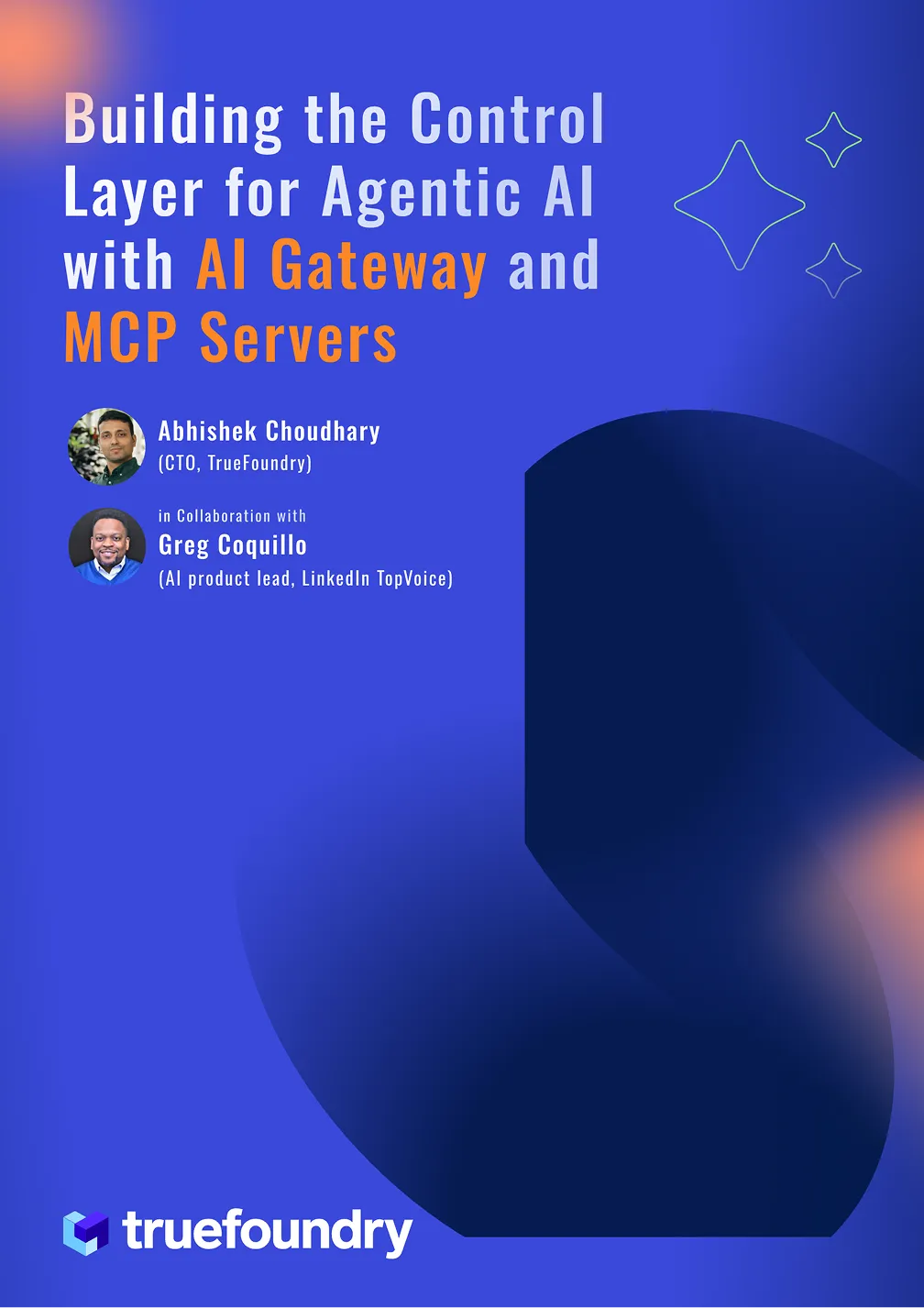Big Data and ML Practices at Palo Alto Networks
Machine Learning at Palo Alto Networks: Enhancing Cybersecurity through Innovation
In today's rapidly evolving digital landscape, as enterprises expand their digital footprints, the need for advanced threat detection and remediation becomes a priority. At the heart of this task at Palo Alto Networks is a robust machine learning (ML) infrastructure that powers the company's cutting-edge security solutions. This blog post explores the machine learning practices at Palo Alto Networks, drawing insights from a conversation with Harsh Verma, Senior Staff Software Engineer working at the intersection of ML and big data.
The Role of Machine Learning in Cybersecurity
Machine learning models are integral to both detecting and mitigating potential security breaches. These models analyze vast amounts of data generated by network traffic, software usage, and other digital activities to identify patterns indicative of malicious behavior.
As Harsh explains, the primary tasks of machine learning in cybersecurity are twofold:
- Detection: Identifying potential threats by analyzing traffic logs and network data.
- Remediation: Offering solutions to mitigate detected threats, such as enhancing security policies or providing actionable insights to users.
These tasks require the continuous processing of massive datasets, where machine learning models can identify anomalies or patterns that might signal a security breach. The ability to process and analyze data at scale is crucial, as threats can manifest in various forms, from unusual traffic patterns to suspicious software activity.
The Journey from Software Engineering to Machine Learning
Harsh's journey into the world of machine learning began with a strong foundation in software engineering. After moving to the United States for his Master's in Computer Science, he focused on artificial intelligence (AI) and machine learning.
He worked as a research assistant in areas like natural language processing and computer vision. This academic background laid the groundwork for his transition into machine learning roles within the industry.
Upon joining Palo Alto Networks, Harsh was involved in building software that enhances network security through machine learning. The transition from software engineering to machine learning was driven by a desire to tackle more complex and evolving challenges. As Harsh notes, the field of machine learning is not only rigorous but also dynamic, offering continuous opportunities for learning and innovation.
Week-to-Week Operations: Tackling Cybersecurity Challenges
Harsh's role at Palo Alto Networks involves addressing various cybersecurity challenges through machine learning. The week-to-week operations are structured around the continuous monitoring of network activity, identifying potential threats, and developing models that can predict and prevent these threats.
Harsh emphasizes the importance of both real-time and batch processing in these operations. While real-time processing is crucial for immediate threat detection, batch processing allows for the analysis of long-term data trends, helping to refine models and improve future threat detection capabilities.
Real-Time vs. Batch Processing: A Balanced Approach
The effectiveness of machine learning in cybersecurity relies heavily on how data is processed. At Palo Alto Networks, a combination of real-time and batch processing is used to manage data and derive insights.
- Real-Time Processing: This is essential for immediate threat detection. For example, if a user accesses a potentially malicious website, the system needs to respond instantly to prevent any security breach. Real-time processing ensures that the machine learning models are continuously analyzing incoming data streams and flagging any suspicious activity.
- Batch Processing: Batch processing is used for analyzing data over longer periods, such as identifying potential threats based on traffic logs from the past 30 days. This approach allows the system to detect patterns that might not be immediately apparent in real-time analysis. For instance, if a specific type of traffic consistently triggers alerts, batch processing can help in understanding whether this is a new threat or a false positive.
The combination of these two processing methods ensures that Palo Alto Networks' security solutions are both responsive and thorough, capable of addressing immediate threats while also learning from historical data.
Building and Deploying Machine Learning Models
The development of machine learning models at Palo Alto Networks follows a well-structured pipeline, from data ingestion to model deployment and serving. Harsh outlines the key steps in this process:
- Data Ingestion and Preprocessing: The first step involves collecting and cleaning the data. This is a crucial phase as the quality of data directly impacts the performance of the machine learning models. Data ingestion might involve streaming data from various sources, such as network logs or software usage records.
- Feature Engineering: Once the data is ingested, the next step is to engineer meaningful features that can be used to train the models. This might involve transforming raw data into formats that the model can easily interpret, such as converting log data into numerical features.
- Model Training: With the features prepared, the machine learning models are trained using large datasets. Training might involve using a mix of traditional machine learning algorithms and more recent advancements, such as large language models (LLMs) for specific tasks.
- Model Deployment: After training, the models are deployed in a production environment where they can analyze live data. Deployment involves setting up the models so that they can be accessed by various systems in real-time.
- Model Serving: Finally, the deployed models are served to customers, providing them with the insights and alerts needed to maintain robust cybersecurity. This might involve integrating the models with existing security platforms or creating new tools that leverage the models’ predictions.
The Tech Stack: Tools and Platforms
Palo Alto Networks employs a diverse tech stack to support its machine learning initiatives. This includes tools for data processing, model training, and deployment:
- Data Processing: The company uses Apache Spark for processing large datasets. Spark's ability to handle big data workloads makes it ideal for the kinds of batch jobs that Palo Alto Networks runs, such as processing traffic logs or analyzing historical data for threat patterns.
- Streaming Platforms: For real-time data ingestion, platforms like Apache Kafka and Google Pub/Sub are used. These tools allow for the continuous flow of data from various sources, ensuring that the machine learning models have the most up-to-date information.
- Cloud Services: Machine learning models at Palo Alto Networks are often trained and deployed using cloud platforms such as Google Cloud Platform (GCP) and Amazon Web Services (AWS). These platforms offer managed services like Google DataProc for running Spark jobs and Amazon SageMaker or Google Vertex AI for model training and deployment.
- Storage Solutions: Data storage is handled through a mix of services, depending on the project requirements. This includes using S3 or GCS buckets for raw data storage, BigQuery for analytics, and dedicated feature stores for storing engineered features.
- Machine Learning Platforms: For model management and deployment, platforms like SageMaker and Vertex AI are employed. These platforms offer integrated environments for building, training, and deploying machine learning models at scale.
The Integration of Generative AI
As the field of machine learning evolves, Palo Alto Networks has begun integrating generative AI into its cybersecurity solutions. Generative AI, particularly large language models, offers new possibilities for threat detection and response. These models can be used to generate predictions or simulate potential threat scenarios, providing deeper insights into how to prevent security breaches.
Harsh mentions that while traditional machine learning models are still the backbone of Palo Alto Networks’ cybersecurity solutions, the integration of generative AI is an exciting development. By leveraging both classic ML models and modern generative AI, the company is able to enhance its threat detection capabilities, offering more comprehensive security solutions to its customers.
Challenges and Future Directions
The integration of machine learning into cybersecurity is not without its challenges. One of the primary difficulties is ensuring that the models remain effective as the threat landscape evolves. Cybersecurity threats are constantly changing, and machine learning models must be continuously updated to recognize new patterns of malicious behavior.
Another challenge is the balance between real-time processing and batch processing. While real-time analysis is crucial for immediate threat detection, it can be resource-intensive. Conversely, batch processing is less demanding but may miss real-time threats. Palo Alto Networks addresses this by using a hybrid approach, combining the strengths of both methods.
Looking to the future, Palo Alto Networks aims to continue innovating in the cybersecurity space. This includes further integration of generative AI and expanding the use of machine learning across different security platforms. By staying at the cutting edge of technology, the company hopes to remain a leader in providing robust, scalable cybersecurity solutions.
Built for Speed: ~10ms Latency, Even Under Load
Blazingly fast way to build, track and deploy your models!
- Handles 350+ RPS on just 1 vCPU — no tuning needed
- Production-ready with full enterprise support
TrueFoundry AI Gateway delivers ~3–4 ms latency, handles 350+ RPS on 1 vCPU, scales horizontally with ease, and is production-ready, while LiteLLM suffers from high latency, struggles beyond moderate RPS, lacks built-in scaling, and is best for light or prototype workloads.






.png)












